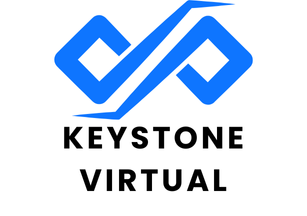Unlock the full potential of your Dell Precision 5750 for 3D rendering and CAD applications with practical, targeted strategies. Optimizing performance ensures smoother workflows, quicker rendering times, and a more efficient design process. Whether you’re a seasoned professional or an enthusiastic learner, implementing these essential tips can drastically enhance your experience. Prepare to elevate your productivity and tackle complex projects with greater ease. Let's explore straightforward solutions that can transform your workflow.
Optimizing Hardware Settings
Understanding how to optimize hardware settings can significantly enhance the performance of your Dell Precision 5750. Here are some practical steps to ensure your device operates at its peak efficiency.
Also to read : Mastering High-Resolution Multi-Monitor Setups for Your Trading Station with the NVIDIA Quadro P2000
Adjusting Power Settings
One of the simplest ways to optimize your Dell Precision 5750 is by adjusting the power settings. For maximum performance, switch to the "High Performance" power plan. This ensures that your CPU runs at full speed, which is crucial for demanding tasks like 3D rendering or video editing. Remember, this might lead to increased power consumption and heat generation, so it's essential to monitor your device's temperature.
Upgrading RAM and Storage
Upgrading the RAM and storage options can also lead to performance enhancement. Increasing RAM allows for smoother multitasking and faster processing of large files. Opt for SSD storage, which offers quicker data access and improved system responsiveness compared to traditional HDDs.
Also to discover : Essential Tips for Configuring a Multi-Bay Thunderbolt 3 RAID Enclosure for Pro Video Editing
Configuring GPU Settings
For tasks such as 3D rendering, configuring the GPU settings is vital. Ensure that your GPU drivers are up-to-date and adjust the settings to prioritize performance over quality. This can significantly reduce rendering times and improve overall efficiency in graphics-intensive applications.
By focusing on these areas, you can maximize the potential of your Dell Precision 5750.
Software Preferences and Configuration
To truly harness the power of your Dell Precision 5750, it's essential to focus on software optimization. This includes customizing settings for CAD applications and managing how software utilizes hardware resources.
Customizing CAD Software Settings
When working with CAD applications, adjusting the software settings can make a significant difference. Tailor the CAD settings to match your specific workflow. For example, enabling hardware acceleration can improve the performance of 3D models. Additionally, adjust the level of detail to balance between performance and quality based on your project needs.
Leveraging GPU Acceleration in Rendering Software
For tasks like 3D rendering, leveraging GPU acceleration is crucial. Ensure that your rendering software is configured to utilize the GPU effectively. This can dramatically reduce rendering times, allowing for a smoother and more efficient workflow. Check the software's preferences to enable GPU rendering and adjust settings to prioritize speed.
Managing Background Processes
Managing background processes is another critical aspect of software optimization. Close unnecessary applications and services to free up system resources. This ensures that your primary software, especially resource-intensive ones like CAD and rendering applications, operates without hindrance.
Recommended Tools and Software
Enhancing the capabilities of your Dell Precision 5750 involves selecting the right tools for 3D rendering and CAD software. These tools are essential for maximizing performance and efficiency in demanding tasks.
Essential CAD and Rendering Software
For professionals, having the right CAD software is crucial. Popular options include AutoCAD and SolidWorks, known for their robust features and compatibility with the Dell Precision 5750's hardware. For 3D rendering, software like Blender and V-Ray can leverage your device's GPU, providing faster render times and smoother workflows.
Performance Benchmarking Tools
To ensure your device is operating optimally, use performance tools like Cinebench and Geekbench. These tools help benchmark your system's capabilities, allowing you to diagnose and address performance bottlenecks. Regular benchmarking ensures that your Dell Precision 5750 maintains peak efficiency.
Plugins and Add-ons
Enhance your software's functionality with plugins and add-ons. For CAD applications, consider plugins that offer additional modelling features or improved rendering capabilities. These tools can significantly expand the potential of your CAD and rendering software, providing a more comprehensive and versatile experience.
Performance Benchmarks and Comparisons
Understanding the performance benchmarks of the Dell Precision 5750 is crucial for evaluating its capabilities, especially in CAD applications. Monitoring key metrics such as CPU speed, GPU performance, and RAM usage during intensive tasks can provide insights into the device's efficiency. These benchmarks help identify any potential bottlenecks and ensure that the laptop meets the demands of professional software.
When comparing the Dell Precision 5750 to other laptops in the same category, it stands out for its robust performance in CAD applications. Its powerful GPU and ample RAM make it a formidable contender in the market. Real-world user reviews often highlight its ability to handle complex 3D models and rendering tasks with ease, showcasing its superior CAD performance.
For a more comprehensive evaluation, consider the feedback from professionals who have tested the Precision 5750 in various scenarios. They often report that the laptop maintains stable performance under heavy workloads, making it an ideal choice for architects, engineers, and designers. By focusing on these performance benchmarks, users can make informed decisions about whether the Dell Precision 5750 meets their specific needs.
Troubleshooting Common Issues
Navigating performance issues with the Dell Precision 5750 can be challenging, especially when tackling demanding tasks like 3D rendering. Here, we explore solutions to common problems users might face.
Identifying and Resolving Overheating Issues
Overheating is a prevalent issue that can impede performance. Begin by ensuring that the laptop's vents are unobstructed and clean. Dust accumulation can exacerbate heating problems. Use a cooling pad to enhance airflow. Adjusting power settings to balance performance and energy consumption can also mitigate overheating.
Fixing Software Crashes and Freezes
Software crashes and freezes disrupt workflow. To troubleshoot, ensure all drivers and software are up-to-date. Check for any software conflicts by running the system in safe mode. If problems persist, consider a clean reinstall of the affected applications to reset any corrupted files.
Addressing Slow Rendering Times and Lag
Slow rendering times can be frustrating. First, verify that the GPU and CPU are not throttled by heat. Optimise settings within rendering software to prioritise speed over quality if necessary. Increasing RAM can also alleviate lag by providing more resources for processing tasks.
User Reviews and Experiences
Understanding user reviews provides valuable insights into the real-world performance of the Dell Precision 5750, especially for those engaged in 3D rendering.
Compilation of User Experiences
Users frequently highlight the laptop's robust capabilities in handling complex tasks. Many appreciate its ability to manage large-scale 3D models and intricate rendering projects. The Dell Precision 5750 is often praised for its powerful GPU and high-resolution display, which enhance the user experience in graphics-intensive applications.
Analysis of Common Praises and Complaints
While many users commend the device for its performance, some express concerns about its thermal management. Overheating can be a recurring issue during prolonged rendering sessions, leading to thermal throttling. Additionally, the battery life is often cited as a limitation, particularly when running demanding software.
Recommendations from Power Users in the 3D Rendering Field
Power users suggest several strategies to optimise performance. Recommendations include investing in a high-quality cooling pad to mitigate overheating and ensuring regular updates to GPU drivers for optimal efficiency. Users also advise customising software settings to balance performance and energy consumption, enhancing the overall rendering experience.
Tips for Maintenance and Longevity
To ensure the Dell Precision 5750 remains in top condition, focusing on laptop maintenance is crucial for maintaining performance longevity.
Regular Software Updates
Keeping your software up-to-date is essential for optimal performance. Regularly check for updates to your operating system and applications. This not only enhances security but also ensures that your laptop runs efficiently with the latest features and improvements.
Best Practices for Cleaning and Maintaining Hardware
Proper hardware maintenance plays a vital role in extending the life of your laptop. Clean the keyboard and screen with a soft, lint-free cloth to prevent dust buildup. Ensure the vents are unobstructed to facilitate proper airflow, which helps in managing heat effectively. Periodically check internal components, such as fans, for dust accumulation and clean them carefully.
Strategies to Extend Battery Life
Maximising battery life during intensive tasks involves strategic management of power settings. Lower the screen brightness and disable unnecessary background applications. Consider using battery saver modes when possible. Additionally, avoid leaving your laptop plugged in continuously to prevent battery wear and maintain its longevity.
Video Tutorials and Visual Guides
For those seeking to enhance their skills with the Dell Precision 5750, exploring video tutorials and visual guides can be incredibly beneficial. These resources offer practical insights and step-by-step instructions that are particularly useful for mastering 3D rendering tips and other complex tasks.
Recommended Video Resources for Performance Optimization
To optimize your device's performance, several video tutorials provide comprehensive guidance. These resources cover essential topics such as configuring power settings, managing RAM effectively, and utilizing GPU capabilities. By following these tutorials, users can ensure their laptop operates at its full potential.
Step-by-Step Visual Guides for Software Configuration
Visual guides are invaluable for configuring software settings tailored to specific needs. They offer detailed walkthroughs on setting up CAD applications and adjusting rendering software for maximum efficiency. Such guides simplify complex processes, making it easier for users to customize their software environment.
Tutorials for Effective Troubleshooting Techniques
When encountering issues, troubleshooting techniques presented in video tutorials can save time and effort. These tutorials demonstrate how to address common problems like overheating, software crashes, and slow rendering times, ensuring a smoother and more productive workflow.
Community Resources and Forums
Engaging with community support can be invaluable for users of the Dell Precision 5750, especially when navigating complex tasks like 3D rendering. Online communities provide a platform for sharing tips, troubleshooting advice, and experiences.
Overview of Online Communities for Dell Users
Several online platforms cater specifically to Dell users, offering a wealth of information and peer support. These communities often include dedicated sections for various Dell models, including the Precision series, where users can discuss hardware and software optimizations.
Participating in Forums for Sharing Tips and Experiences
Forums for 3D rendering enthusiasts are excellent places to exchange knowledge. By participating, users can learn from others' experiences, discover new techniques, and share their insights. These interactions often lead to improved workflows and innovative solutions to common challenges.
Utilizing Community Resources for Troubleshooting and Advice
When encountering issues with the Dell Precision 5750, community resources can be a lifeline. Many forums have sections dedicated to troubleshooting, where users can seek advice from others who have faced similar problems. This collaborative environment fosters problem-solving and can provide quick, practical solutions.
Future Upgrades and Considerations
As technology evolves, considering future upgrades for your Dell Precision 5750 can ensure sustained performance and compatibility with emerging trends.
Potential Hardware Upgrades
With advancements in technology, upgrading hardware components like RAM and SSD can significantly boost your Dell Precision 5750's efficiency. As newer, faster memory modules and storage solutions become available, integrating these can enhance multitasking and reduce load times, keeping your device competitive.
Evaluating Future Software Updates
Staying abreast of software updates is crucial for maintaining optimal performance. Evaluate the requirements of upcoming software versions to ensure compatibility with your current hardware. This proactive approach can help you plan necessary upgrades, ensuring that your system remains capable of handling the latest applications and tools.
Planning for Emerging 3D Rendering Technologies
The field of 3D rendering is continuously evolving, with new technologies and trends emerging. Investing in a powerful GPU and staying informed about industry developments can prepare your Dell Precision 5750 for future rendering demands. This foresight allows you to leverage cutting-edge techniques, ensuring your device remains a valuable tool for creative professionals.











